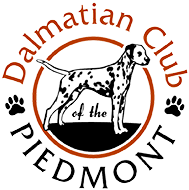PennHip
by Dr. Susanne A. Hughes, DVM
What is PennHip and how does it differ from OFA? “PennHip” stands for University of Pennsylvania Hip Improvement Program. Unlike OFA, which subjectively evaluates radiographs of the hips only as they are positioned in their tightest configuration, PennHip scientifically determines passive hip laxity. It is this laxity or looseness that correlates with development of arthritic changes seen in dogs with hip dysplasia. Three radiographic views are examined – one traditional hip extended position to evaluate existing arthritic changes, one compression view to determine socket depth and fit of the head of the femur in the socket, and one distraction view to assess passive hip laxity. For accurate assessment the dog needs to be deeply sedated or anesthetized. Veterinarians performing PennHip exams must be certified in this method assure reproducibility of results.
Using principles of biomechanics, PennHip scores each hip on an absolute scale from 0 to 1 called a distraction index(DI), then compares this DI to all dogs of that breed tested. This comparison is given as a percentile. The higher the percentile, the greater the number of dogs of your breed that your dog has surpassed in hip joint tightness. Rigorous testing has shown that dogs scoring a DI of less than O.3 have virtually no chance of developing degenerative joint disease (DJD) associated with canine hip dysplasia. Those scoring 0. 7 – 1 are at high risk of developing DJD.
Although PennHip is not officially making breeding recommendations, breeders in their studies who used only dogs scoring in the tightest 50% of the population made tremendous strides in reducing the number of dysplastic dogs produced.
PennHip methods are the culmination of eleven years of research into development of a more accurate standard for assessment of canine hip dysplasia. Unlike OFA, PennHip evaluation can be done on dogs as young as sixteen weeks of age. This becomes a powerful tool for those wishing to critically assess show and breeding potential puppies. PennHip’s predictive value has been shown to be scientifically significant. No studies have shown this to be true with OFA’s hip extended view. This position may even give a false impression of hip joint tightness.
OFA exams have been important in our early attempts to identify dysplastic dogs. Now that a much more objective method with high positive predictability exists, it behooves us as responsible breeders to seriously consider availing ourselves of the benefits we reap using this more scientifically rigorous examination technique.
